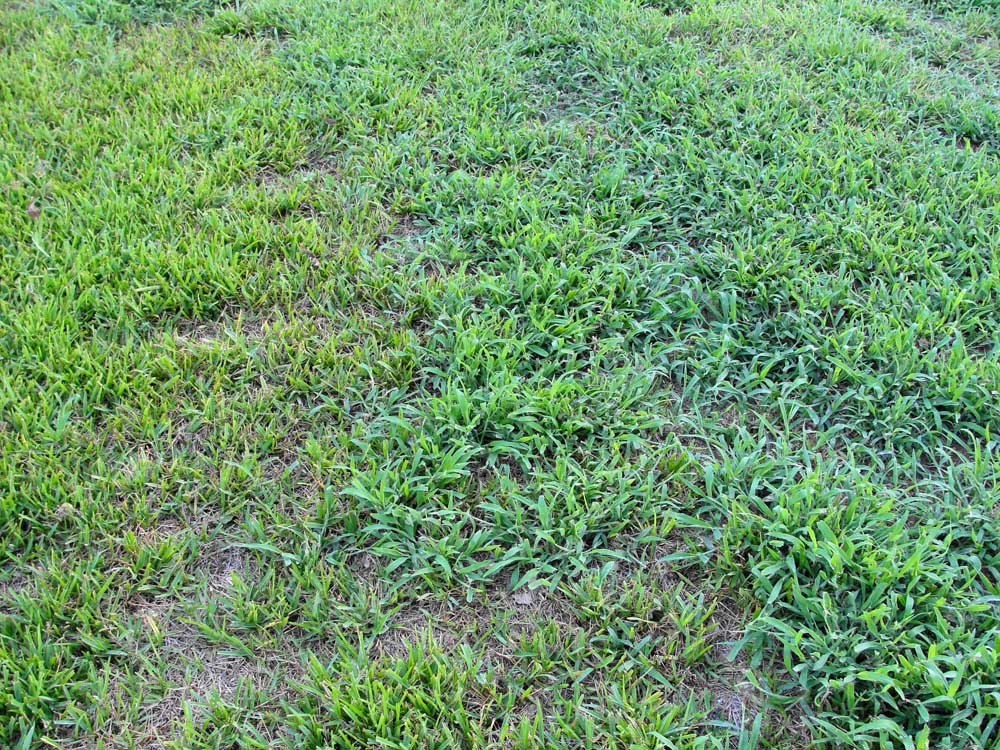Fight these problem weeds with pre-emergent herbicides
Published 7:03 pm Wednesday, February 28, 2018

- Crabgrass is more than happy to sprout and grow in place of dead or thin lawns. (Courtesy)
Spring is just around the corner, which means that summer weeds can’t be too far behind.
Two common lawn weeds — grassburs (sandburs) and crabgrass — are warm-season annuals (or occasionally short-lived perennials) that germinate each spring from thousands of seed produced the previous year.
Trending
Always remember that the best control against weeds in a lawn is having a thick, healthy turf. If there are bare spots and sunlight can hit the ground, weeds will germinate. Otherwise, the only effective control for these grassy annual weeds is using a pre-emergent herbicide.
Pre-emergent herbicides are ones you apply before the weed seeds emerge or start to germinate and sprout. This means you must apply these types of herbicides before you see the weeds. If you see them growing, it’s too late; they only work on annual weeds germinating from seed, not on perennial weeds germinating from an existing crown.
The timing of this pre-emergent herbicide application is absolutely critical. They are normally applied about two to four weeks before our last frost. The last frost here is generally around March 15. This means the typical time to apply a pre-emergent herbicide for warm-season annual weeds like crabgrass and grassburs is around the middle of February during a mild winter and early spring, or the first of March during a colder, prolonged winter.
Pre-emergent granular herbicides like Team and Dimension are available from retail garden centers, feed stores and hardware stores. Other independents package and label their own brand. Read the label and follow its directions. They must be watered in to be effective, as they form a chemical herbicide barrier at the soil level that kills the seedlings as they begin to germinate. It’s critical to use only the recommended rate to keep from damaging the existing lawn, trees and shrubs.
If the weed infestation has been severe in past years, a second application can be made 90 days later. This is the normal protocol:
1. Mow the lawn to eliminate as many weeds and as much thatch as possible. If you intend to drop the mower down one notch for the first mowing (“scalping”), do so at this time.
Trending
2. Apply your pre-emergent granules according to label directions on that same day. Water lightly to form a layer of herbicide across the top of the soil.
3. If broadleaf weeds like chickweed and henbit survive the mowing or scalping, apply a broadleaf weedkiller (containing 2,4-D) to them once they have started to regrow vigorously (usually at least a week after mowing). Be very careful with broadleaf herbicides to avoid damaging other plants. Follow label directions exactly.
4. Wait about a month to apply a 3:1:2 ratio lawn fertilizer (not a “weed and feed”), as our warm-season grasses don’t use the fertilizer until the nights are warm and they are actively growing.
Greg Grant is the Smith County horticulturist with the Texas A&M AgriLife Extension Service. You can follow him on Facebook at “Greg Grant Gardens.” He writes a monthly blog titled “Greg’s Ramblings” at arborgate.com and writes “In Greg’s Garden” for Texas Gardener magazine (texasgardener.com).






